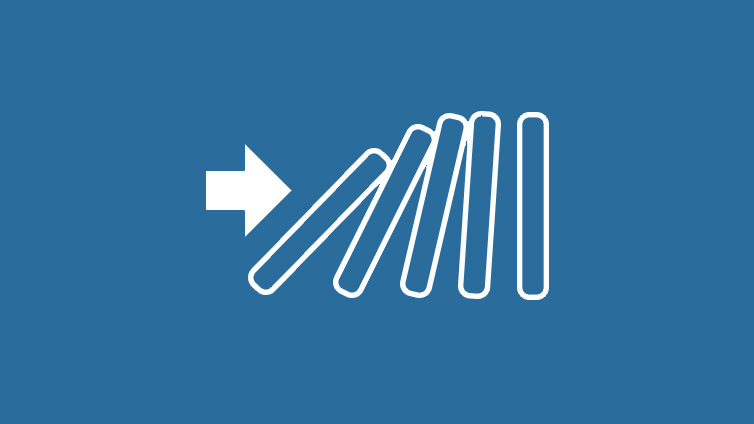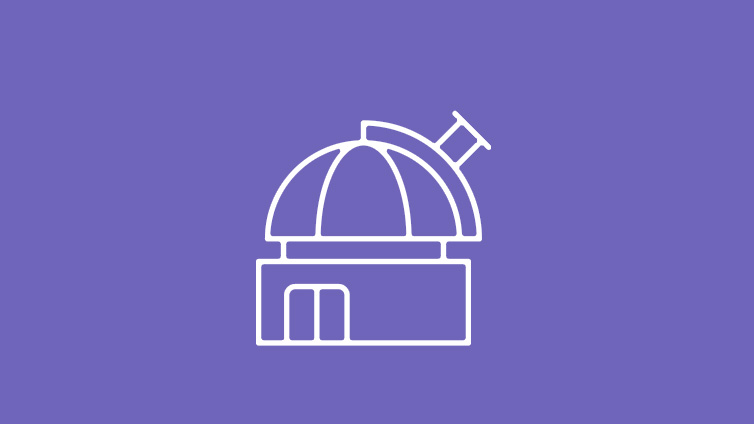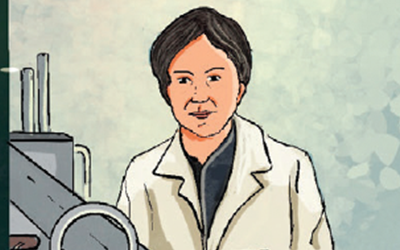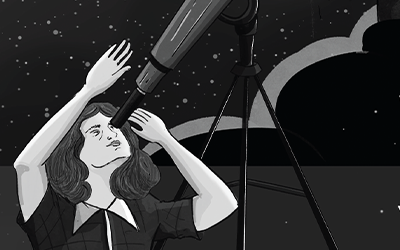Big Bang
Teacher Resources
Driving Question: How did the Universe begin?
In an instant, the Universe went from nothing to producing the building blocks for everything we know. The Big Bang helps explain how these massive changes took place.
Learning Objectives:
- Explain the Big Bang theory and the evidence that supports it.
- Investigate the historical thinking skill of causation.
- Use scale switching to make sense of the history of the Universe, Earth, and humanity.
Vocab Terms:
- Big Bang
- causation
- complexity
- element
- energy
- matter
Opener: Big Bang
To teach this lesson step, refer to page 2 of the Lesson 2.2 Teaching Guide.
Check out these Big History timeline posters to show when the Universe was created and when the early Thresholds occurred.
We know a lot about the history of the Universe, but you may be surprised to learn that there are some mysteries we have yet to solve.
Causal Thinking
To teach this lesson step, refer to page 3 of the Lesson 2.2 Teaching Guide.
Check out our Causation One-Pager to learn more about how OER Project approaches this historical thinking practice.
OER Project’s unofficial mascot is Alphonse the Camel. Jump into this conversation about how different teachers approach using this intro to causation in the classroom.
Everything that happens has a cause: we call this “causation.” Now that you know what it is, learn how historians use it every day!
Big History’s First Threshold
To teach this lesson step, refer to page 3 of the Lesson 2.2 Teaching Guide.
Check out the OER Project Video Guide for tips on using video in the classroom.
Need to remind students of what the thresholds are? Check out this conversation in the OER Project Teacher Community to see how different teachers approach this concept.
The first threshold in Big History was passed billions of years ago, but it wouldn’t have happened without certain “ingredients” and a just-right set of conditions.
Origin of the Universe
To teach this lesson step, refer to page 4 of the Lesson 2.2 Teaching Guide.
Check out the OER Project Differentiation Guide for ideas about how to scaffold writing for your students.
The Big Bang created the building blocks for new complexity in the Universe. This is your opportunity to watch how it all went down.
-
Guiding Questions
-
Before you watch
Preview the questions below, and then review the transcript.
While you watch
Look for answers to these questions:
- What were the first elements in the Universe?
- Why is the Big Bang the first threshold of increasing complexity?
- What evidence do we have that the Big Bang happened?
- What questions do we still have about the Big Bang?
After you watch
Respond to this question: Do you think we will figure out what caused the Big Bang? Explain your reasoning.
Key Ideas
Geography: Map of the Observable Universe
To teach this lesson step, refer to page 5 of the Lesson 2.2 Teaching Guide.
Check out the BHP Timeline and the BHP Timeline Posters, they are great resources to hang in your classroom.
How can we begin to understand the age and vastness of the Universe? Maps and timelines can help!
Closer: Big Bang
To teach this lesson step, refer to page 7 of the Lesson 2.2 Teaching Guide.
Wanting to evaluate your students understanding of the content in this lesson? Check out the OER Project Assessment Guide to help spark ideas.
You’ve learned a lot about the early Universe in this lesson. Now it’s time to put that knowledge to work.
Dr. Wu and the Left-Handed Universe
To teach this lesson step, refer to page 7 of the Lesson 2.2 Teaching Guide.
So you now know how every scientist’s work builds on the work of other scientists. You’re about to meet one of the big ones in the discipline of physics.
-
Guiding Questions
-
Before you read
Preview the questions below, and then skim the comic, paying attention to things like prominent colors, shapes, and types of text and fonts. How do you know where to start and in which direction to read? What’s in the gutters (the space between panels)? Who or what is the focus of the comic?
While you read
Look for answers to these questions:
- How did Chien-Shiung Wu overcome the challenges she faced as she became a physicist?
- What does it mean to say that the Universe is “left-handed”?
- What role did Dr. Wu play in the discovery of our “left-handed” Universe?
- Why was Dr. Wu’s 1956 experiment important to collective learning?
- What information do you get from the comic’s images?
After you read
Respond to these questions:
- Had you heard about Chien-Shiung Wu before reading this comic?
- Why do you think someone like Dr. Wu isn’t featured in more of the big stories about collective learning?
Revealing the Dark
To teach this lesson step, refer to page 8 of the Lesson 2.2 Teaching Guide.
Dr. Vera Rubin examined the stars her entire life, and along the way, her observations transformed astronomy.
-
Guiding Questions
-
Before you read
Preview the questions below, and then skim the comic, paying attention to things like prominent colors, shapes, and types of text and fonts. How do you know where to start and in which direction to read? What’s in the gutters (the space between panels)? Who or what is the focus of the comic?
While you read
Look for answers to these questions:
- What does the portion of the comic involving bathroom doors tell you about Dr. Rubin’s experience as a scientist?
- What does it mean that Dr. Rubin’s most important observation was something we can’t see?
- What evidence did Dr. Rubin use to uncover the existence of dark matter?
- What does Dr. Rubin mean in this quote at the top of the page: “We’re out of kindergarten, but only in about third grade”?
- How has the artist designed the page, text, and illustrations to tell you about Dr. Rubin’s observations and career?
After you read
Respond to the following questions:
- What does this biography tell you about how our understanding of the Universe has changed?
- How did perceptions of Dr. Rubin’s observations change over time?










